This handout discusses how to present tables and figures in APA style. APA Style offers a specific guideline for formatting tables and figures. In the 7th edition guideline, APA updated the formatting of tables and figures. This article shows how to format numbers, titles, bodies, headings, and notes in APA style.
.jpg)
American Physiological Association (APA Style) offers a specific guideline for formatting tables and figures. In the 7th edition guideline, APA updated the formatting of tables and figures.
According to APA style, in formatting tables, the following rules should be followed:
Table number should be in plain text and placed above the table.
The brief title of the table should be in italics and title case and should be placed below the table number.
Table should have no vertical lines and should have as few horizontal lines as possible.
Table notes should be included only as needed.
APA Style Sample Table
Table 1
Cronbach's Alpha Scores for Measurement Models
|
Measurement models |
Number of items |
Threshold |
Cronbach’s alpha |
|
HRQoL |
8 |
.70 |
.846 |
|
Burnout |
12 |
.70 |
.982 |
|
Job stress |
16 |
.70 |
.918 |
|
Groupthink |
18 |
.70 |
.852 |
The following diagram created by American Physiological Association (APA) illustrates the basic table components in APA style.
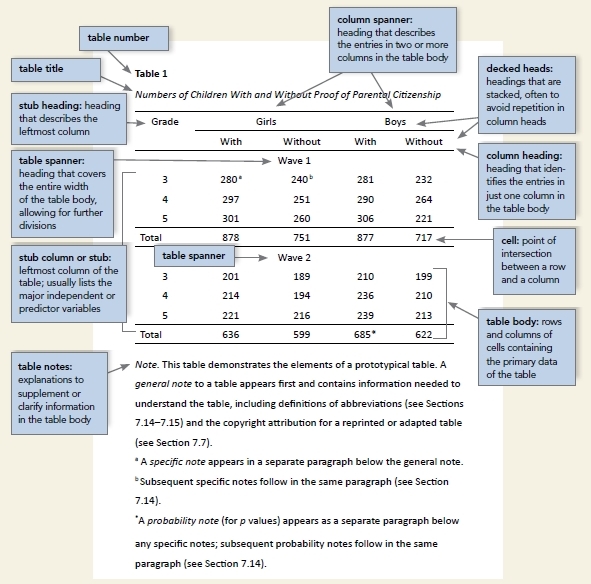
(Source: APA 7th edition, 6.10.2020)
The number of the table (e.g., Table 1, Table 2) should appear above the table title.
The body should be in boldface, and tables should be numbered in the order in which they are mentioned in the text.
Note that APA 7th edition update requires the table numbers in bold.
Each table should have a brief and descriptive title, and the title should be placed in one double-spaced line below the table number.
It should be capitalized and italicized as exemplified below:
Table 2
Numbers of Teachers by Tenure
Each table should contain a column heading.
Besides, some tables may have decked heads, table, and column spanners.
Column headings should be centered and capitalized in sentence case.
The details of these headings can be found in APA publication manual.
A table body should include all the rows and columns, including the heading row.
As mentioned earlier, an APA formatted table should have no vertical lines. It should have as few horizontal lines as possible.
The body can be single-spaced, double-spaced, or one-and-a-half-spaced.
APA suggests that the information in the leftmost column or stub column of the table body should be left-aligned, while the heading should be centered.
It also suggests that the information in all other cells be centered. However, when you think left-aligning the information would improve the readability, then it can be left-aligned. It is especially important when those cells include lots of text.
When necessary, notes explaining the table should be added below the table. Notes should be included when adding them is necessary to understand the data presented in your table.
As emphasized by APA 7th edition, ‘‘three types of notes (general, specific, and probability) appear below the table as needed to describe contents of the table that cannot be understood from the table title or body alone (e.g., definitions of abbreviations, copyright attribution, explanations of asterisks used to indicate p values)’’ (APA 7th edition, 2020).
According to APA style, in formatting figures, the following rules should be followed:
Figure number should be in plain text, boldface, and placed above the figure.
The brief title of the figure should be in italic and title case and should be placed below the figure number.
Figure notes should be included when necessary and appear below the figure.
Notes come in three types of notes as they would be for tables: general, specific, and probability notes.
APA Style Sample Figure
Figure 1
The Number of Private Schools by Districts
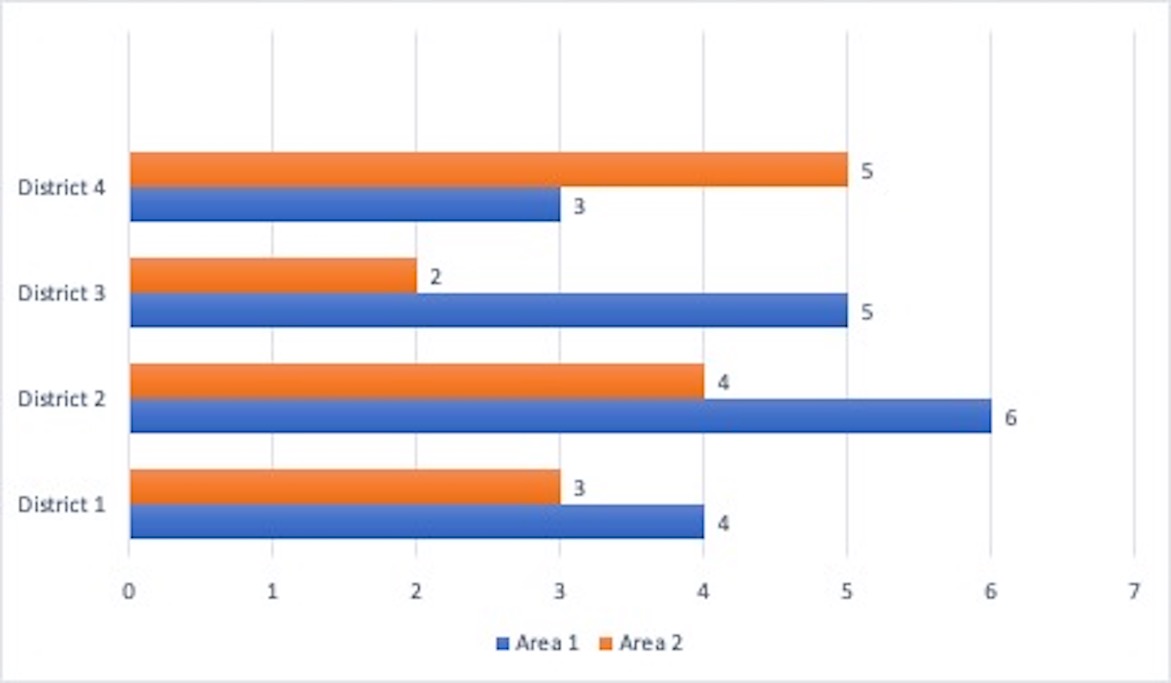
The following diagram created by American Physiological Association (APA) illustrates the basic figure components in APA style.
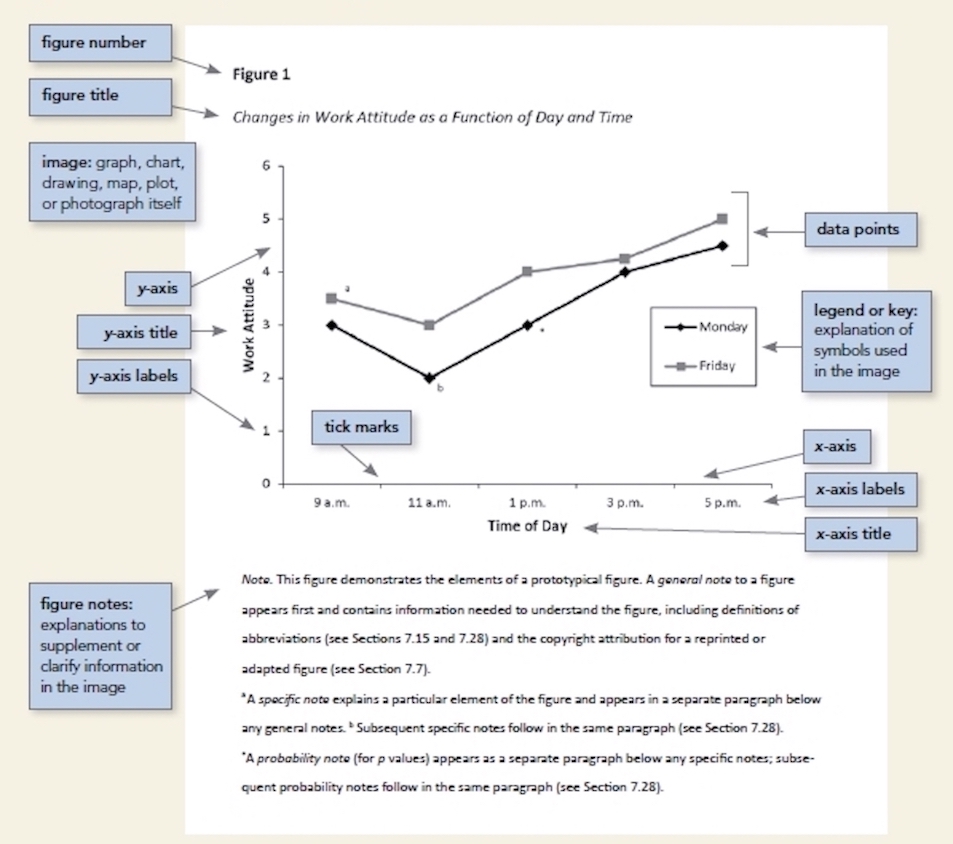
(Source: APA 7th edition, 6.10.2020)
The number of the figure (e.g., Figure 1, Figure 2) appears above the figure and should be in boldface.
Figures should be numbered in the order in which they are mentioned in the text.
Note that APA 7th edition requires the figure numbers in bold.
A figure should have a brief and descriptive title, and the title should be placed one double-spaced line below the figure number.
The title should be capitalized and italicized as exemplified below:
Figure 2
The Number of Private Schools by Districts
A graph, chart, photograph, drawing, or other illustration consists of the image portion of a figure.
APA guide suggests that when the text appears in the image of the figure, a sans serif font between 8 and 14 points should be adopted.
When the figures have legends, they should be positioned within the borders of the figure.
They should explain any symbols used in the figure image.
Words in the legend should be capitalized in title case.
When necessary, notes explaining the figure should be added below the table.
Notes should be included when adding them is necessary to clarify and describe the content of the figure.
Best Edit & Proof expert editors aim to provide your manuscripts with proper scholarly and academic tone and style. They will significantly improve the chances of having your research manuscript accepted for publishing. They provide subject-area proofreading and editing services in several fields categorized under various disciplines. With our extensive knowledge and expertise, we will help you find the right tone and style for your manuscript.
If you need our subject-area editors to format your manuscripts, giving you the fundamental rules for formatting your manuscripts as described in your guidelines, such as APA, MLA, or Chicago/Turabian styles, then contact us. At Best Edit & Proof, our proofreaders and editors edit every type of academic paper. We have a user-friendly website, and a simplified ordering process.
If you would like our subject-area editors and language experts to work on your project for the improvement of its academic tone and style, then please visit the order page. It is easy! It takes only a few minutes to submit your paper and complete the process. Click here to see how it works.

We have flat-rate pricing based on our type of service (editing or proofreading), word count, and turnaround time. Enter your word count or copy and paste your document into our pricing calculator to get an instant quote.
If you need support for editing and proofreading services, contact us. You can also e-mail us or use the 24/7 live chat module to get direct support. We have a 24/7 active live chat mode to offer you direct support along with qualified editors to refine and furbish your manuscript. Alternatively, you can text us through our WhatsApp business line.
Follow us on Twitter, LinkedIn, Facebook, Instagram, and Medium.
For more posts, click here.
This handout discusses how to present tables and figures in APA style. To give you an opportunity to practice your proofreading, we have left a few spelling, punctuation, or grammatical errors in the text. See if you can spot them! If you spot the errors correctly, you will be entitled to a 10% discount.
How to Cite Sources in APA Referencing Style | With APA 7th Edition Update
30.11.2020
Importance of Citations in Academic Writing
05.03.2022
How to Use Track-Changes Feature in Microsoft Word 2021
19.11.2020
How to Use ‘‘et al.’’ in APA Style (7th Edition)
28.11.2020
A Complete Guide to MLA In-Text Citations
01.06.2021
MLA Paper Format: How to Format a Paper in MLA Style
31.05.2021
How to Format DOI in APA Style (APA 7th Edition Update)
29.11.2020
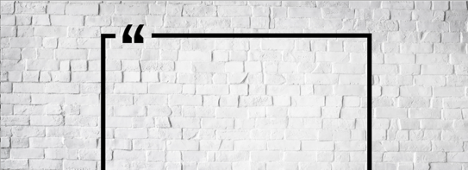
Being a proofreading and editing service provider, we often find researchers making common citation mistakes in their research papers. Well, making mistakes is normal, but repeating the same mistakes is not accepted. Recognizing the gravity of the situation, we here bring the list of common errors students and researchers make while citing sources.
Continue Reading
The American Psychological Association highlights the need to talk about all people with inclusivity and respect. Writers adopting APA 7th edition must strive to use bias-free language and avoid perpetuating prejudicial beliefs or demeaning attitudes in their writing.
Continue Reading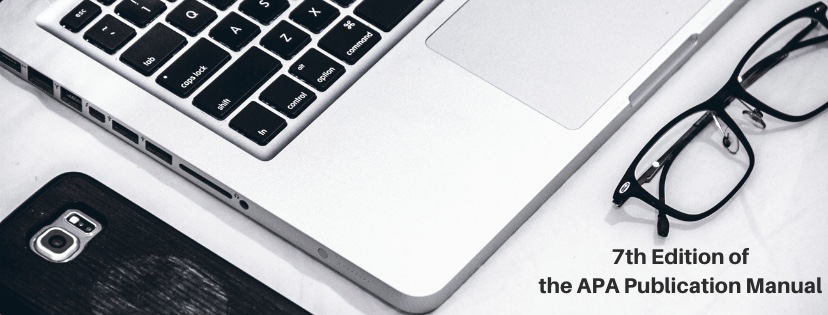
The purpose of APA style is to uniform use of elements such as selection of titles, headings, subheadings, citation of references, tone, punctuation, and abbreviations, presentation of numbers and statistics, formatting of tables and figures, and many other elements that are a part of the manuscript. The APA style consists of in-text citation and reference list entry.
Continue Reading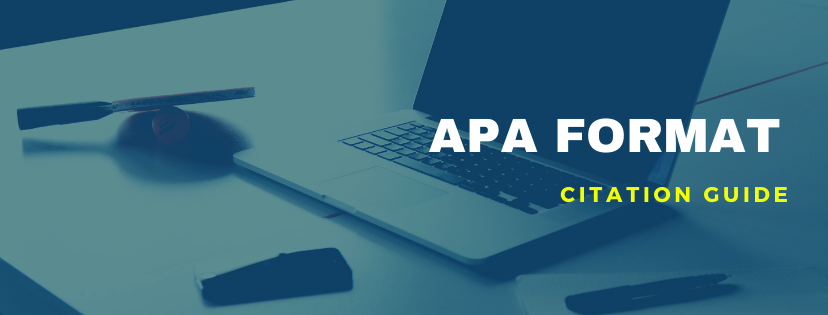
The American Psychological Association (APA) format is the most common style used to cite sources within the social sciences. This handout will give you a brief guide on the Publication Manual of the APA. For more information, please consult the Publication Manual of the American Psychological Association (7th Edition).
Continue Reading
The acronym ‘‘et al.’’ is an abbreviation for the Latin term ‘et alia,’’ meaning ‘‘and others’’ and used in academic in-text citations when referring to a source with multiple authors. Depending on the number of authors a reference has, an APA in-text citation is abbreviated by using ‘et al.’ after the first author’s last name.
Continue Reading
MLA is considered one of the most popular and most used citations and referencing styles in academic writing. This quick guide provides the basic rules for MLA in-text citations and reference list for academic papers and essays.
Continue Reading
One of the defining aspects of academic writing is that it is research-oriented. Academic authors constantly refer to and review credible literature in their field of study to succor their academic arguments and plausibly divulge the contents of their manuscripts to the readers. However, as much as it is necessary for academics to refer to trustworthy sources, correctly mentioning them in-text or in the bibliography is equally important. This is where the concept and importance of citations come into the picture.
Continue Reading